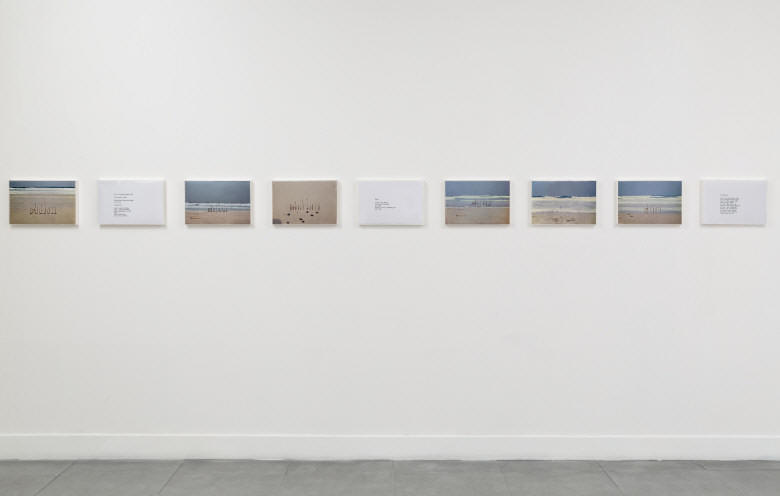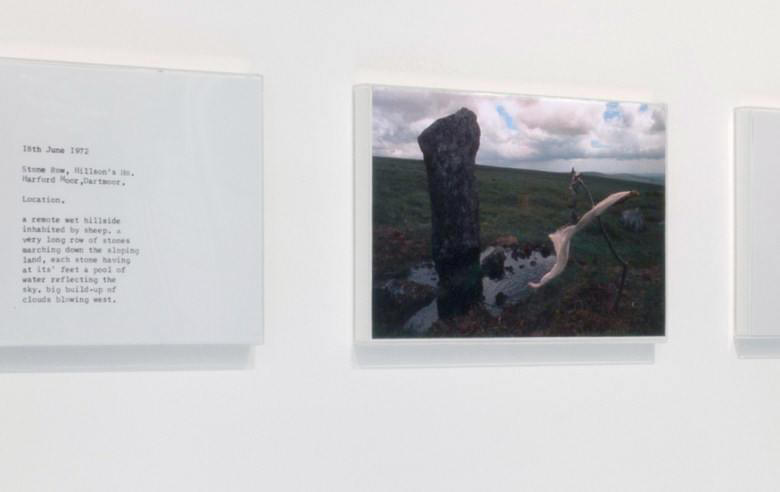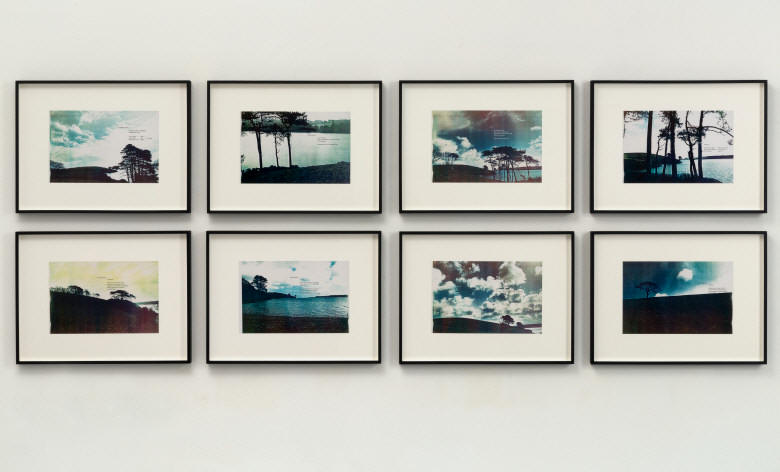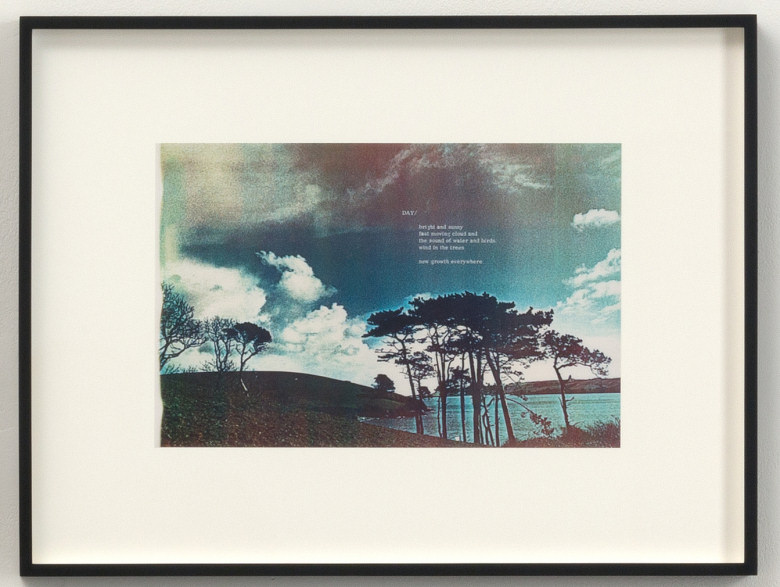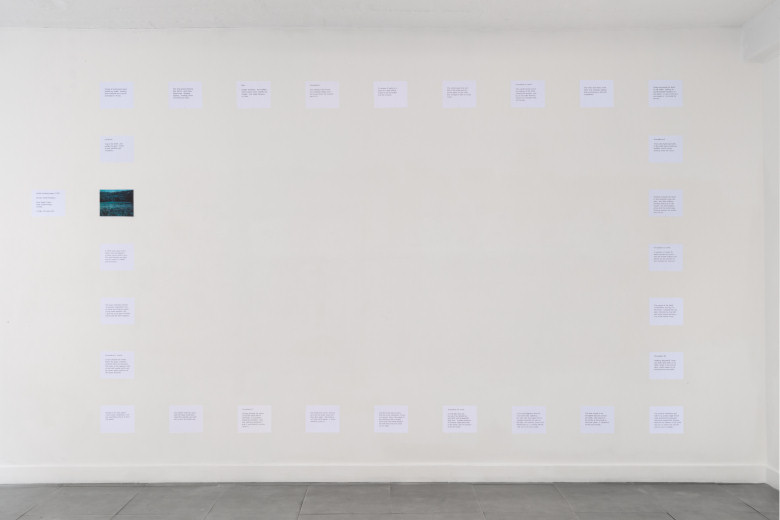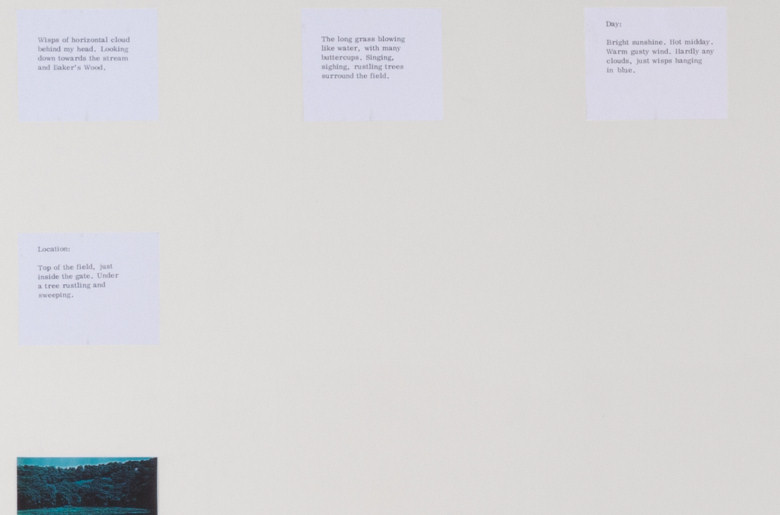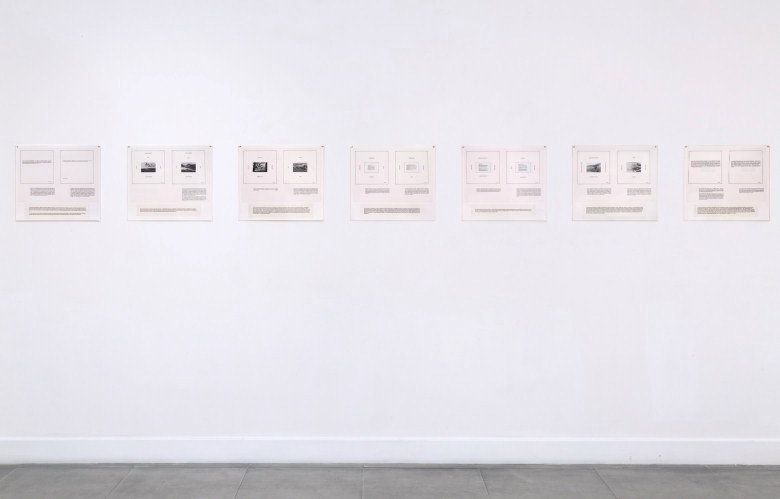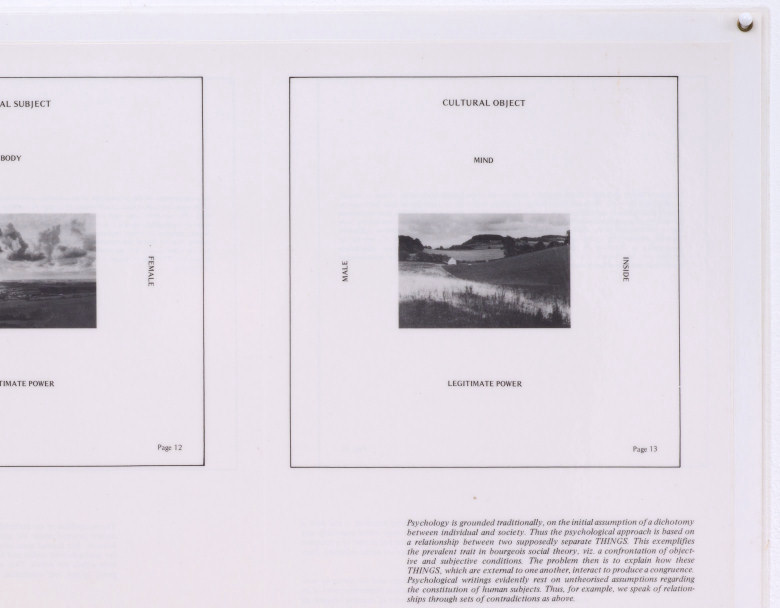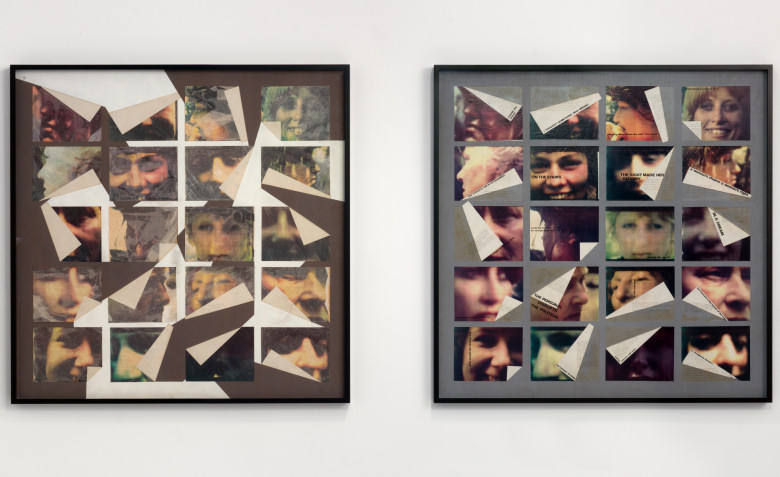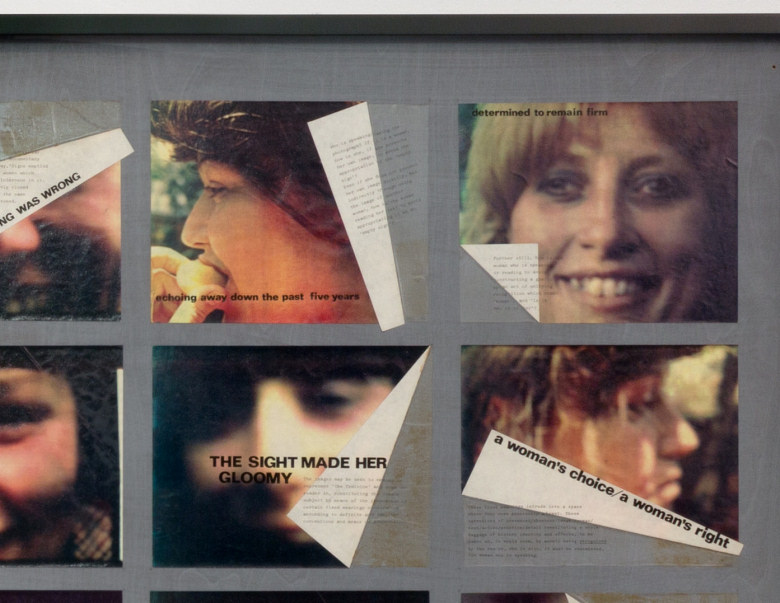|
|
| home | exhibitions | interviews | features | profiles | webprojects | archive |
|
Some dimensions of my lunch pt. 2: Marie Yates Richard Saltoun, London 24/6/16 - 22/7/16
Field Working Paper 7. - 26th April 1972 - Porthmeor Beach, St.Ives,
Cornwall, 1972
Field Working Paper 9. - 18th June 1972 - Hillson's Ho, Harford Moor,
Dartmoor., 1972
Durgan Field Working Series 2 (from Signals 1975 - 78), 1976
Dorset Field Working (from Signals 1975 - 78), 1975
Oppositional Frameworks 1 (from Signals 1975 - 78), 1976
Texts, 1977-79
Image/woman/text, 1979
John Latham: Documentation,
1986
In the early 1960s, Marie Yates was known as an abstract painter, working in St.Ives. As one of few women painters in that context, she became disillusioned by the inequalities of the art world of the time, and she returned to studies in Fine Art in order to explore new ideas, at Hornsey College of Art in the September of 1968. Whilst there, she rejected the American Modernist aesthetic ideal and began to discuss ideas about the role of art within society.
Through minimalist installation work involving soft fabric forms, neon light and wind/air, in which the minimalist photographic documentation was often the work itself, she posed questions about art, though not without critical detractors. But the inequalities remained an unspoken problem. During this time 1969 - 70, she was strongly influenced by the writings of Lucy Lippard, Yoko Ono and the beginnings of Conceptual Art, particularly the exhibition When Attitudes Become Form and the work of Victor Burgin, Joseph Kosuth, Sol LeWitt, Lawrence Weiner, Eva Hesse, Art-Language and John Latham (her mentor for a time), and was also involved with the Artist Placement Group and took part in their exhibit at the Hayward Gallery with her placement presentation.
She emerged from Hornsey in 1971, with the landscape works: 'Field Workings'. These were conceptual installations employing image and text, but without theorisation, the development of which later on (in mid 70s), came to question the role of the artist, and the function of 'the artwork'. By 1973 the projects were being well-received and she gained small grants, positive responses, commissions and shows for this work, including two solo exhibits at the Midland Group, Nottingham and the Arnolfini Bristol. Some of these photo- text works will be featured in the current exhibition.
The works constructed by Marie Yates for the exhibition Artists Over Land at the Arnolfini Gallery in 1975 marked a critical shift in the landscape works (the 'Field Workings') of the previous years. Three pieces formed one installation work and stressed the function of time as indeed did the relationship between the three parts. The role of the spectator was given a central role in this work. One of these pieces will be on show in the current exhibition.
The notions of 'field workings', 'procedures', 'documentation' etc., were forms of an innovation in which events became the structuring principle of Art and uniquely related to experience, and to its context. By 1977 she had turned to themes of culture and political ideology, still using landscape as a focus in questioning the importance of language in art and the relationship of images and texts and the place of the photograph within culture. She had also become convinced that Art must become inextricably bound up with social change. Three works hardly seen at all from this period will be included in the current exhibition.
In a book entitled A Critical Re-Evaluation of a Proposed Publication, published by Robert Self in 1978, she confronted 'the display and consumption of landscape' by juxtaposing beautiful views of rural England with simple binary oppositions - a confusion of predictable romanticism and objectification devices in order to expose the codes at work. At about the same time, she became very interested in the work of Mary Kelly and Laura Mulvey, and was drawn into the excitement of the feminist movement in art, and debates on the role of the media in society.
In 1979 she responded to an invitation from Lucy Lippard to take part in the exhibition ISSUES at the Institute of Contemporary Arts in London, with a major work entitled Image/woman/text (after Roland Barthes), which explored social preconceptions about photographic images of women, the way they are made, and their meanings. This important work will also be seen in the current exhibition. Following on from this came the long-term project on the power of the image in the construction of identification and sexuality: The Missing Woman, 1982, and then a major project dealing with desire and separation in the process of a daughter mourning a mother: The Only Woman, 1985, negotiating the interface between the social and the psychic. Recently, using installation, projection, images and text, she has turned to the question of exile and belonging, and to the impossibility of returning home, all of which are now the conditions of so many.
The exhibition also features works by the radical British artist John Latham (b. 1921, Livingstone, Zambia, d. 2006, London), an associate of Yates in the 70's. Their association produced her placement project for APG, as well as offering a base at Latham's barn in Buckfastleigh, Devon, to facilitate several of her 'Field Working' projects across Dartmoor.
|
|
|

